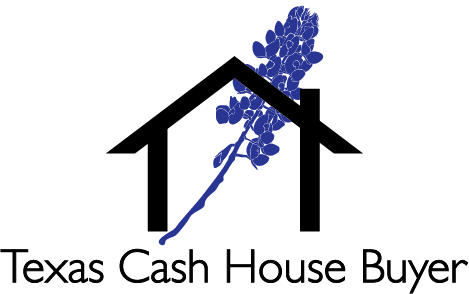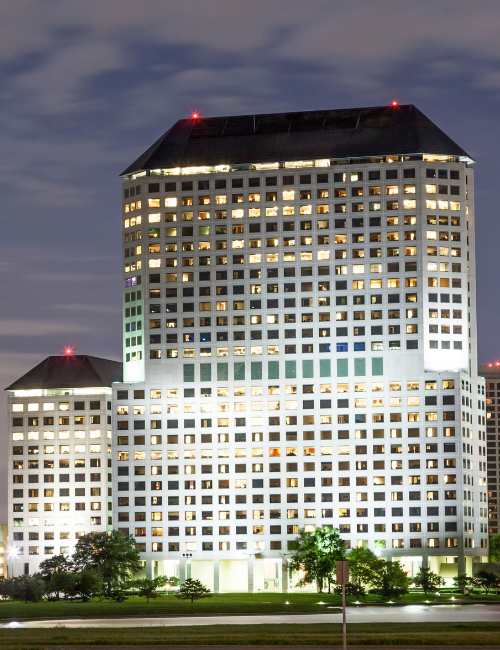
This city in North Texas is one of the most interesting because it has a lot of history, growth, and character. In this area, tall buildings are built next to quiet lanes lined with trees. There is both new and old charm, and communities stay linked through shared spaces and smart planning.
No matter how long you’ve lived in Irving or how many times you’ve been there, learning about its neighborhoods and council districts will help you understand how the city is laid out, how diverse its people are, and how strong its sense of community is.
Our detailed maps of neighborhoods and districts show off Irving’s unique character, famous sites, and the ways its communities are connected. These maps don’t simply assist visitors find their way; they also tell the story of how Irving has changed from its early days to become one of the most linked communities in the Dallas-Fort Worth area.
Key Highlights
- Irving’s neighborhood maps show the city’s cultural diversity, topography, and community aspects for people who live there and people who visit.
- These maps aid with municipal planning and make sure that Irving’s growth is fair, balanced, and good for all districts.
- Knowing where their community ends and begins makes people feel more connected, which helps make sure that city resources are shared fairly.
- Irving’s prosperity will depend on working with Dallas County to promote projects that make the whole North Texas area stronger.
- Neighborhood maps show how Irving’s growth fits in with the growth of the region, keeping tradition alive while inviting new ideas.
The Neighborhoods That Make Irving What It Is

Irving isn’t just one city—it’s a vibrant collection of neighborhoods, each with its own charm. From the sleek corporate canals of Las Colinas and the scenic greenbelts of Valley Ranch to the historic elegance of the Heritage District and the welcoming, family-friendly streets of Irving Heights, every corner adds to the city’s unique appeal. If you’re looking to sell your house fast in Irving, these diverse communities make it easy to attract the right buyers quickly.
Las Colinas: Where Work and Beauty Meet
Las Colinas is one of the most well-known areas in the Dallas-Fort Worth Metroplex. Lake Carolyn, the Mandalay Canal, and the beautiful Mustangs at Las Colinas sculpture are all things that this planned neighborhood is recognized for. There are modern business buildings, high-end residences, small hotels, and strolling trails along the river here.
The Urban Center is always busy, with everything from big businesses to exquisite eating. The Irving Convention Center and the Toyota Music Factory contribute to the fun. Las Colinas people may easily get to business, play, and culture in only a few blocks.
Valley Ranch: A Charming Suburb with Easy Access to the City
If you go north, you’ll come to Valley Ranch, a neighborhood constructed around beautiful canals that used to be part of a functioning ranch. Valley Ranch has parks, paths, and tree-lined streets that give it a quiet suburban air. It’s also only a few minutes from major roads and job hubs. Families adore the schools in the neighborhood and how close they are to stores and sports facilities.
The Heritage District: The Old Town of Irving
Irving started here, before there was a skyline in Las Colinas. The Heritage District, which is also known as Downtown Irving, is where history and community come together. The Heritage Park Museum, which depicts the narrative of the city’s early days, is one of the things you’ll find there. The Downtown Irving/Heritage Crossing Station is a transit hub that connects people to Dallas and Fort Worth with the Trinity Railway Express.

Hospital District and Irving Heights: Easy to Get To and Central
The Hospital District and Irving Heights are closer to the core of the city. They have a combination of old residences, established communities, and easy access to important services. These neighborhoods are great for anyone who wish to be close to hospitals, schools, and the city’s public buildings.
Other Important Areas
Broadmoor Hills, Northgate Heights, and the Arts District are all different. Some are quieter and more family-friendly, while others are more active and artistic. Together, they make up the connective tissue that makes Irving both varied and whole.
Why Maps Are Important in Irving
Maps in Irving are more than simply ways to get around; they are plans for progress, fairness, and identity.
Getting to Know the Layout
Maps depict how areas like Las Colinas connect to Valley Ranch or how the Heritage District flows into more suburban streets. These graphic aids show new residents where schools, parks, and public transportation are, which makes it simpler for them to feel at home.
Planning Tools
City planners use maps of neighborhoods and council districts to make choices based on data. They utilize them to monitor development, follow infrastructure developments, and maintain a balance between new expansion and established communities. Maps make ensuring that no community is left behind by showing where public money needs to go.
Making the community feel stronger
People feel proud and like they belong when they know where their neighborhood starts and ends. It’s not just about where you live; it’s also about who you are if you live in Valley Ranch or the Heritage District. These lines also assist make sure that city resources are used fairly and that everyone has the same access to facilities and opportunities.
The Growth of Irving and Its Relationship with Dallas County

Irving’s change didn’t happen in a vacuum. The city works closely with Dallas County and other partners in the area to plan, zone, and build infrastructure. This partnership makes sure that Irving’s growth fits within a bigger North Texas picture that prioritizes economic power, cultural connection, and sustainability.
Dallas County, for instance, helps run the area’s transportation systems, public services, and environmental policies that have a direct effect on Irving’s communities. This relationship lets the city keep growing while still giving its citizens a good quality of life.
Economic policies, such as Texas’s approach to capital gains tax, also play a role in shaping how and where development happens. Since Texas does not impose a state-level capital gains tax, investors and developers often see cities like Irving as especially attractive for real estate and business expansion. That advantage fuels continued growth in commercial projects, residential developments, and long-term investments across the region.
Dallas County, for instance, helps run the area’s transportation systems, public services, and environmental policies that have a direct effect on Irving’s communities. This relationship lets the city keep growing while still giving its citizens a good quality of life.
By following county rules, Irving makes sure that its communities, like the elegant high-rises of Las Colinas and the comfortable houses of Irving Heights, grow in a way that is good for both the economy and the environment.
How Irving keeps things up to date while also keeping them safe
Change is a problem that every city that is growing quickly has to deal with. Irving’s way is to respect its past while looking forward to its future.
- Keeping Identity: The Heritage District and its old buildings are still reminders of the city’s past. People come together to honor that history at events like the Main Street Festival.
- Encouraging Innovation: On the other hand, Las Colinas’s modern designs and mixed-use buildings show that Irving is open to new ideas when it comes to sustainable urban living.
City planners frequently review maps to identify cultural monuments and historic landmarks that should be preserved to protect the city’s heritage during redevelopment. We buy houses in Texas and understand the importance of maintaining the unique character and history of every community.
Living, working, and having fun in Irving
Living in a home
Irving has everything from high-end condos in Las Colinas to single-family homes in peaceful areas like Plymouth Park or Hospital District. The variety of homes parallels the variety of people that live there.
Jobs and Business
Irving is one of the region’s economic engines, including big companies like ExxonMobil, Fluor Corporation, and Kimberly-Clark. Its central location and business-friendly atmosphere make it great for professionals who want both career growth and a comfortable lifestyle.
Culture and Fun
Irving’s Campion Trail connects several communities along the Elm Fork of the Trinity River. It’s a great place for outdoor lovers to walk and cycle. Cultural centers like the Toyota Music Factory and the Irving Arts Center keep the city’s creative side alive.
Mobility and Connectivity
Transportation is very important to Irving’s success. People in the Metroplex may quickly get to any part of the city thanks to DART light rail, the Trinity Railway Express, and being close to DFW International Airport. Neighborhood maps show these linkages, which helps both residents and visitors get around the city more quickly.
Why Neighborhood Boundaries Are Important
Irving’s neighborhood boundaries aren’t random; they are important for how the city works.
- Planning Efficiency: Clear borders let the city decide where to create new parks, enlarge roads, or fix drainage problems.
- Representation of the Community: Each district elects council members who speak up for the needs of their neighborhood.
- Fair Growth: Boundaries make sure that resources are shared fairly so that no district is left out during development or maintenance.
When communities like Valley Ranch or Las Colinas know how big their area is, they can plan events, homeowners’ associations, and civic initiatives that bring people together.
How Irving has changed over the years
It’s amazing to see how much Irving has transformed since the 1980s. What was once open farmland is now home to vibrant mixed-use areas, beautiful parks, and residential neighborhoods that rival the best in the Dallas area. Las Colinas evolved from ranch land into a showcase of modern architecture and stunning water features, while Valley Ranch became one of the region’s most sought-after suburban communities.
Even as Irving continues to grow and change, it still holds onto its strong sense of community—a welcoming blend of small-town warmth and big-city ambition that draws new residents year after year. And just as the city has evolved, Texas Cash House Buyer is here to help homeowners make their next move easier—buying houses for cash in any condition. Call us today to see how we can help you move forward.
FAQs
Why is Irving, Texas a great area to live?
Irving has a central location, a variety of housing options, plenty of work prospects, and a lot of cultural activities. Las Colinas and Valley Ranch are new neighborhoods, but the Heritage District still has a lot of old-world charm.
How do maps of Irving neighborhoods help with planning?
They assist policymakers make smart choices regarding zoning, infrastructure, and sustainability by showing how the city’s neighborhoods are set up.
What is the significance of neighborhood boundaries?
They help people in the area feel like they belong and make sure that amenities like schools, parks, and safety resources are spread around fairly.
What part does Dallas County play in the growth of Irving?
Dallas County and Irving work together on big initiatives like roadways, environmental planning, and regional growth that make the whole metro area stronger.
How do people utilize maps every day?
Maps assist people in the area get around, find their way to parks and cultural sites, plan their commutes, and see how their neighborhood fits into the bigger picture of the city.

